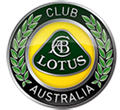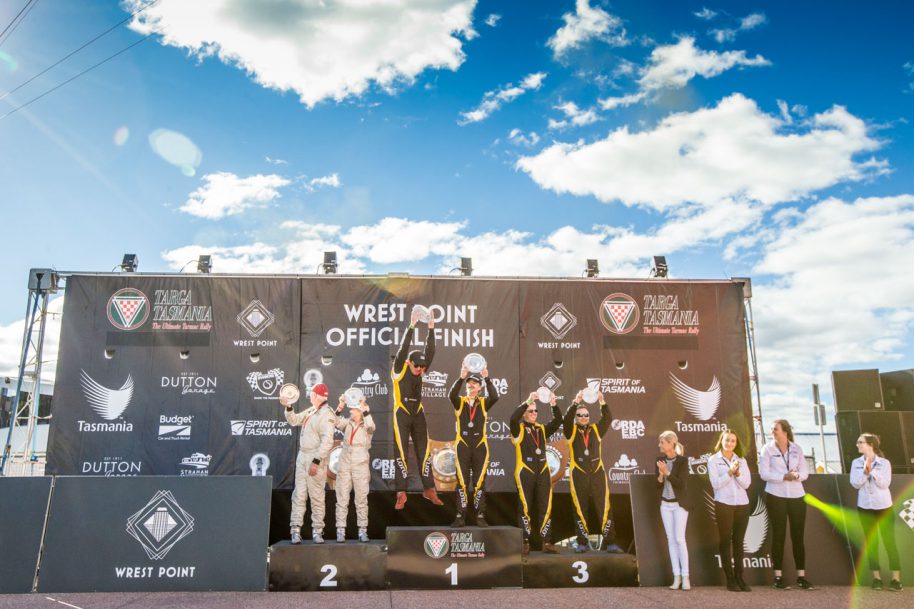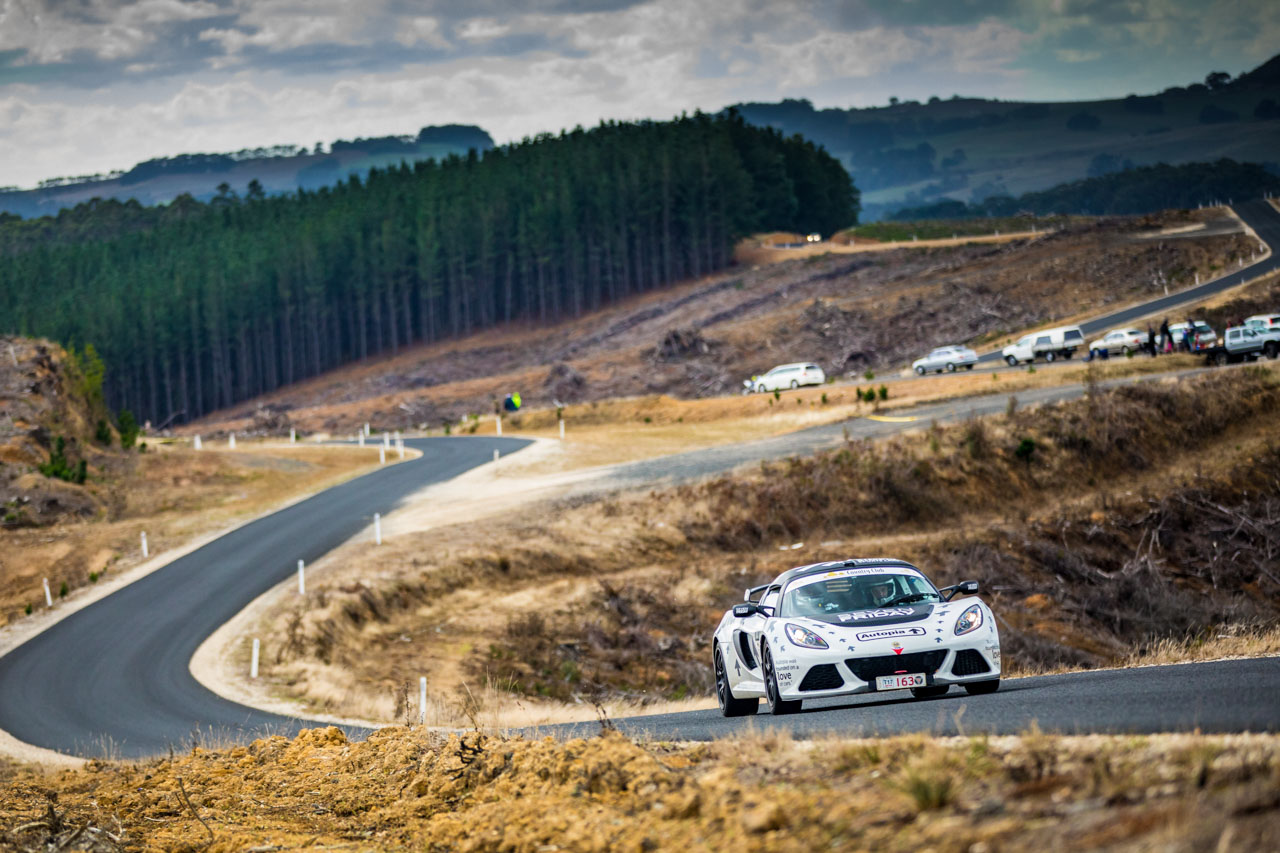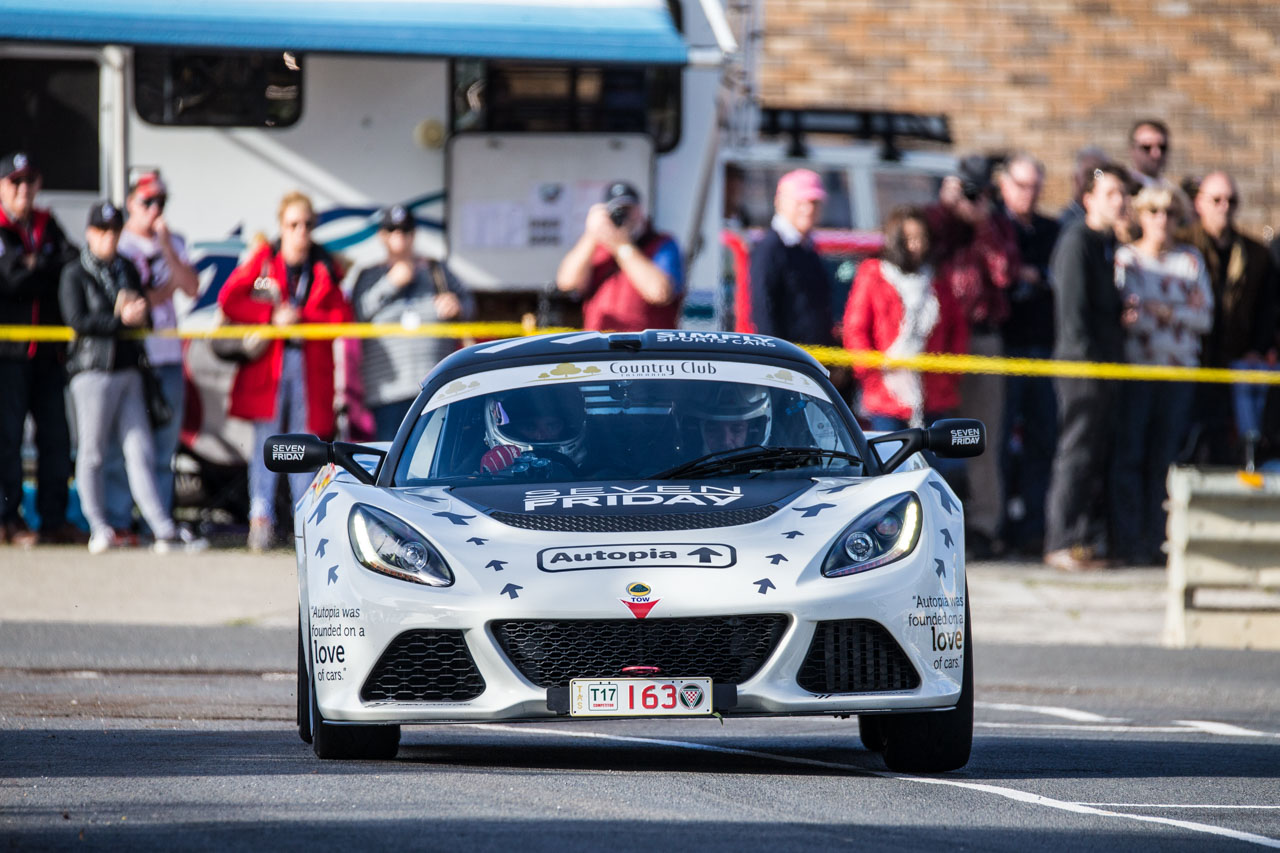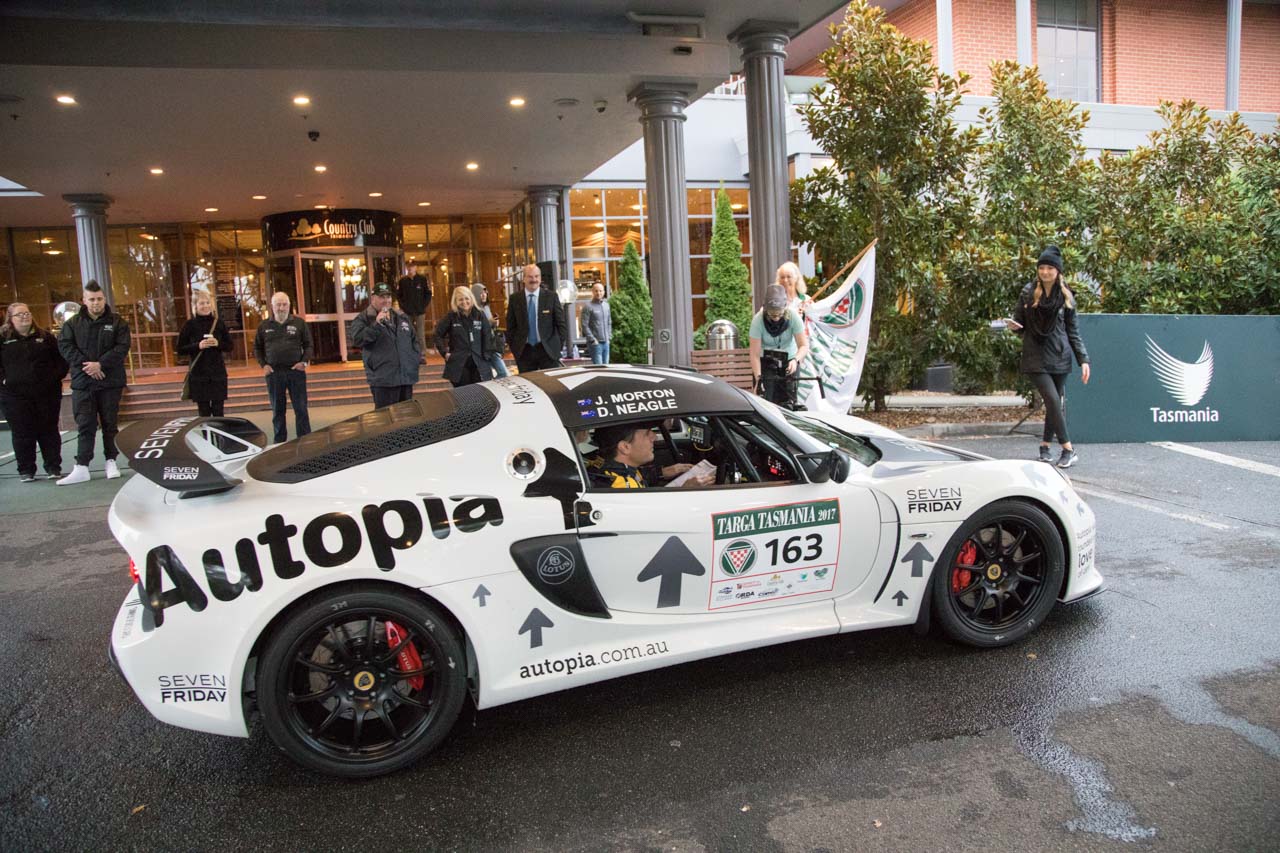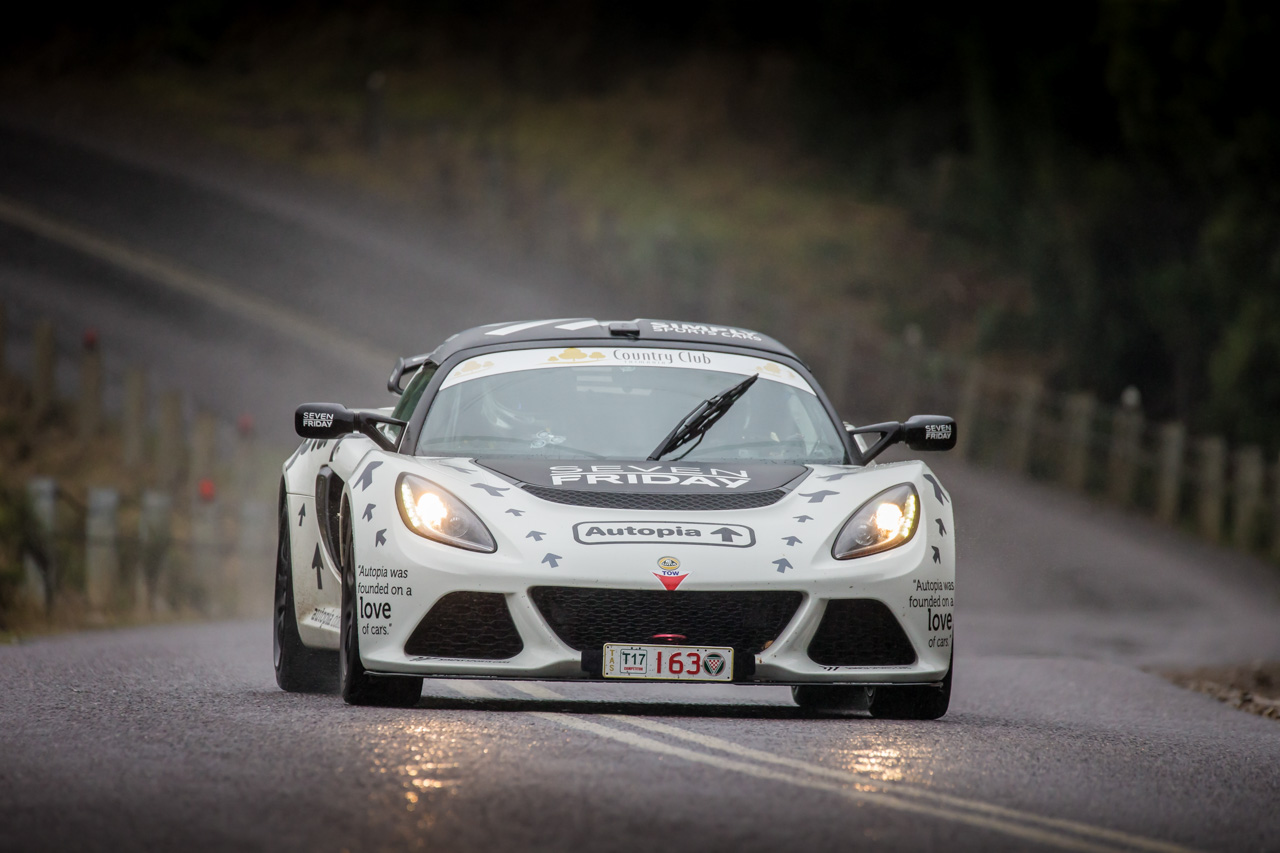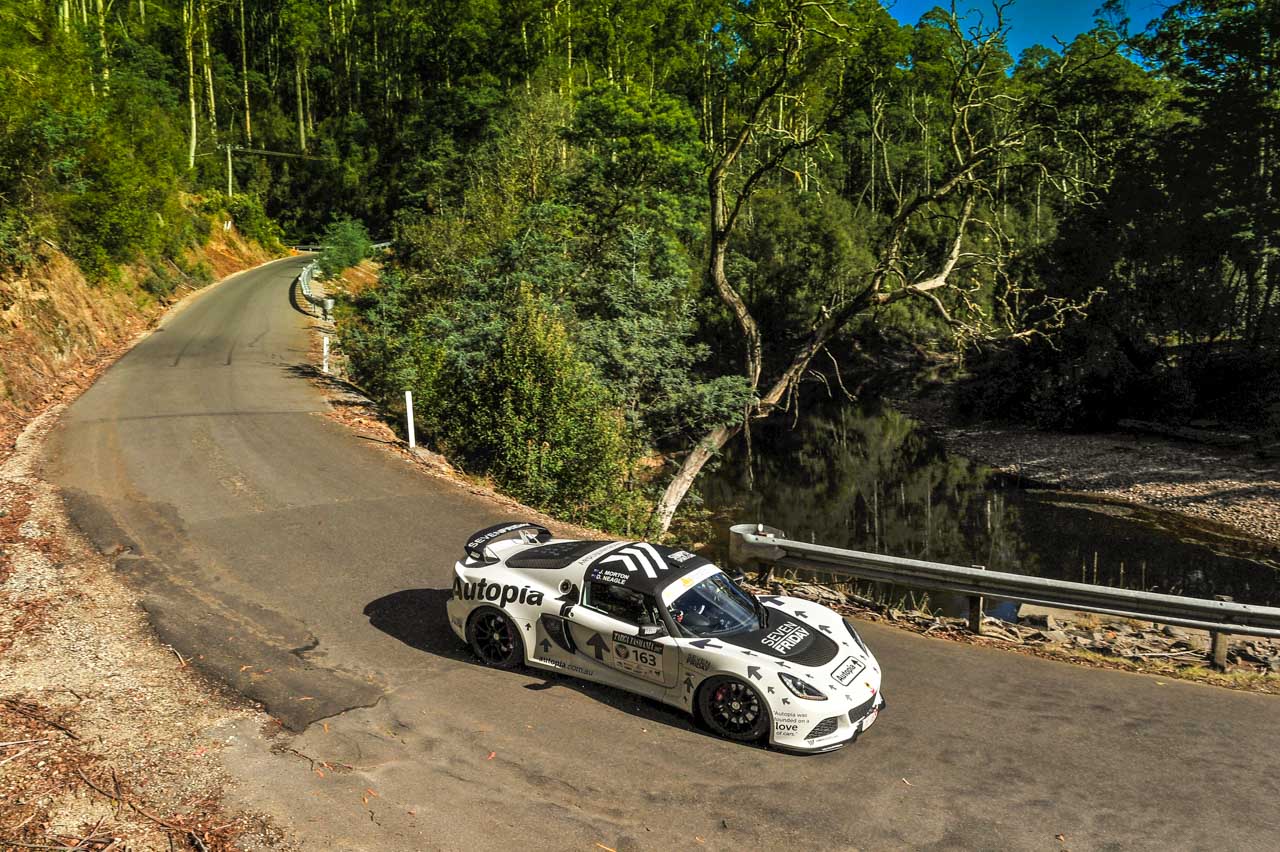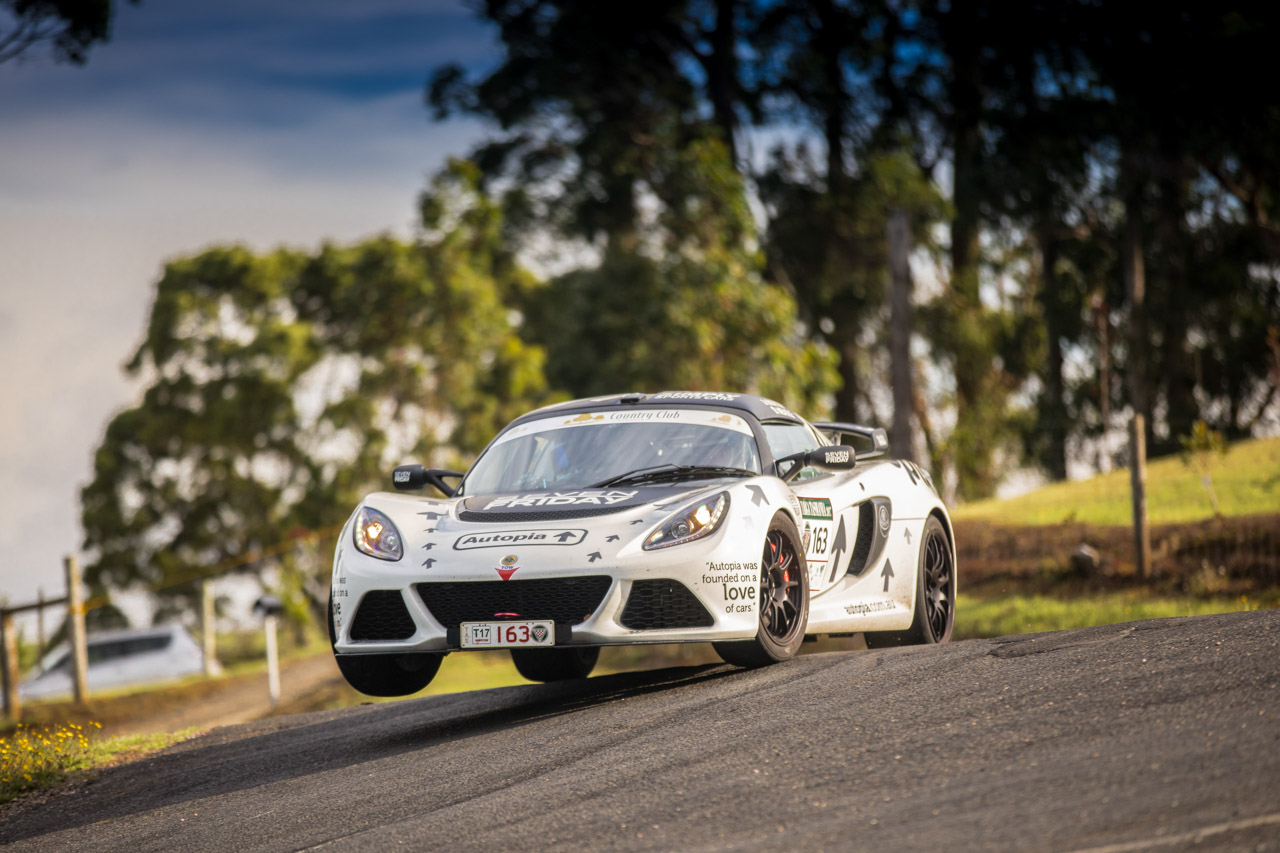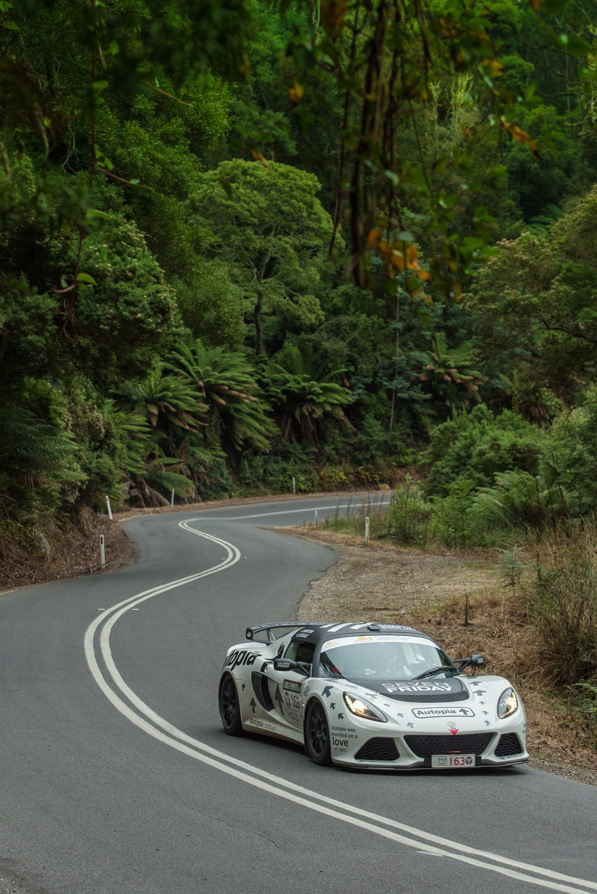Images thanks to Angryman Photography
Targa Tasmania 2017 wrapped up late last month, running over the 24th to the 29th of April, and saw two Club Lotus Australia members crack the podium of the Country Club GT Sports Trophy competition.
Jeff Morton won the competition with co-driver Dennis Neagle in a 2017 Lotus Exige Sport 350, jumping ahead of seasoned competitors Jeff and Nerida Beable and their 2000 Nissan Skyline GTR N1. Martin Duursma and Richard Wodhams repeated their 2016 success, claiming third in a 2013 Lotus Exige S V6.
We sat down with Jeff to chat about his journey to that top step Targa Tas performance, uncover a little of his story and get a blow-by-blow run through the Australian epic.
By Jeff Morton, edited by Seth Reinhardt. Images thanks to Angryman Photography.
I can’t remember a time when I was not into cars, and I’ve taken every car that I’ve ever owned to the track – even if they probably shouldn’t have been there!
The Dutton Rally in 2008 sparked my interest in Lotus. I did the event in a BMW 135i and did really well, especially considering that the car was basically stock. I won my category, but that was in a class for unmodified street cars.
My next goal was to get an outright win and I knew that no matter what I did with that car, it wouldn’t make it into contention. The guys that were winning had worked Mitsubishi Evos and Nissan GTRs and that sort of thing. I’d owned a Subaru WRX STi, and the 4WD thing just didn’t really do it for me.
Mark O’Connor was also running at the time in the outright category in his Lotus Exige, which he stills owns to this day. I saw that he was competitive and doing well and I liked the idea of a light, nimble, rear wheel drive car.
In early 2010 I ended up buying a red Elise 111R, wanting the convertible layout and ability to see out the back. I thought that I’d get the car and throw every modification that could be done at it to compete and give myself a good chance to win Dutton.
I brought one in from the UK with Simply Sports Cars’ help, ordering it in late January and receiving it a few months later. I received it and spent about two weeks driving it stock while I was planning to build it all up, when I was diagnosed with brain cancer.
I had to make a call about what I was going to do with the car, as I couldn’t drive it any more. I needed something to focus my time and energy into during that time of crisis, so I decided to go ahead with my plan.
During that time John Boston drove my car in the NSW round of the Australian Tarmac Challenge (the rebranded Dutton Rally), winning it outright. It was a tick in the box for the car and showed that it was capable.
I had an operation later that year and in May 2011, I got my road licence back. I started to do Burrows days and basically anything that you could under a road licence. I enquired about getting my CAMS licence back, but to get a competition licence back after that sort of thing you need five years and then to jump through all sorts of hoops.
I got an AASA licence, which allowed me to go to Wakefield Park and do Lotus-Only Track Days with Simply Sports Cars, but I was still unable to do sprints with the Club or the Targa competition I was interested in.
Towards the end of 2016 that five year period was over and I’d been able to get the reports required, which meant I could finally get my CAMS L2S back.
This was at around the time of the Targa High Country, and a large Lotus crew was set to do the event. I was very late to the party, so I didn’t really have the chance to do anything to my red car. It’s an absolute monster of a car, but it didn’t have a roll cage in it because it was road registered.
Now that I had my CAMS licence back I was thinking about what kind of motorsport I wanted to be involved in and I was open minded about the process. I entered the TSD Trophy, which stands for time, speed and distance and requires you to get to the end of a stage at a nominated time. I just wanted to go down and see if I even liked tarmac rally.
TSD ended up not being interesting to me. The average speeds were so slow that with my car it was really quite boring. We did quite well, however. We realised at lunchtime on the first day that we were approaching the event in the wrong way, worked out a better plan and ended up climbing up the roster to finish third.
From there I went to the Challenge Bathurst supersprint in late November. This was my first time at Mount Panorama, and I had a really awesome time. I actually didn’t realise that it was a competition, complete with trophies and everything. I did a 2:23, which I was very happy about, and ended up winning my class – Class BD for modified street cars.
I wanted to go to Targa Tasmania, but I realised that my red car needed so many things changed to be competitive that it may not be workable. The car was a 2006 model, and it had had so much work done that it would be very lucky for it to be reliable through the full competition event. I’d had good times in the car and had gotten a fair bit of use out of it, so I decided that it was time to move on and start fresh with a new car. Richard Wodhams from the Lotus club ended up buying the car with Simply Sports Cars facilitating the transaction.
I bought a new white Exige Sport 350 from Simply Sports Cars (since given the name ‘White Lightning’ and left it with them for all of the prep work for Targa Tas. They installed a roll cage, changed the suspension and muffler, put it on lighter wheels, fitted it with two-piece rotors and installed all of the communications and cameras.
We did a shakedown at Eastern Creek, mainly to test a strategy for the GT Sports Trophy, which is a speed limited category. We had a shift light set up and a Vbox HD2, which is a camera system featuring a display that tells you your speed from GPS. We dialled those in so that in third gear the shift light would come on at 130 kilometers an hour. Then I put a heat cycle into the tyres and that was it.
The car had under 70 kilometers on it when we got to Eastern Creek and about 200 on it when we left. We towed it down to Melbourne, where we left the trailer at Trent Valentine’s (a friend of Mark O’Connor’s) workshop, drove the tow car and Lotus onto the ferry and then put another 100 kilometers on the Exige getting to Launceston.
I got to Tasmania a few days early, and my co-driver Dennis Neagle met me. This was my first time on pace notes, so we spent some time doing recce and getting a feel for things in the tow car. That opportunity to get a feeling for the pace notes, what the corner numbers mean and the pace at which they’re delivered, was hugely helpful – going into the event completely cold would have been a big mistake.
My first real drive in the Exige was day one of Targa Tasmania. I was familiar with driving my Elise, but that was 400 horsepower, maybe even a little more, and had much stiffer suspension and smaller tyres. It was much more of a handful. Driving the Exige just felt super planted. It’s heavier and has more tyre underneath it with the bigger and wider wheels.
I came to terms with things pretty quickly, and that’s one of my strengths that I’ve noticed going between different tracks. I love driving on and learning a new track, and I’m able to get to a good pace quickly without making mistakes. So, it makes sense to me that driving Targa, where you’re on a different piece of road all the time, would suit me and my driving style.
On the first day Lee Knappett told Dennis and I to just do our thing and not look at any times so as not to put ourselves under pressure and drive outside of what we would normally do. So, I just drove.
The first day was wet in the morning and super slippery. I was driving comfortably, taking in the pace notes and getting a feel for the car and the new a050 Yokohama tyres. I ran in Sports mode, and hadn’t even put the car into Race mode yet.
The first competitive stage was Sideling, which I later found out we finished 22nd overall, just two seconds off Matt Close in a Porsche GT3 RS, who ended up coming third outright. The combination of the advanced traction and stability control systems, good tyres and compliant suspension gave me a lot of confidence. I never once had a moment that gave me cause for concern. The last thing I wanted to do was put the car out on the first day of the event!
It’s only the third time that the GT Sports Trophy competition has run, and the Jeff and Nerida Beable have won it for the past two years. I knew that they would be my main competition, with a 4WD car and a lot of experience – I later found out it was their 24th Targa Tasmania.
My goal was to not lose too much time in the wet, because I knew that my car would be good in the dry. On that first day I ended up topping the competition with a clean sweep of all competitive stages and stretching out a minute and a half lead.
Throughout the rest of the week it was probably 40/60 between wet and dry. I went with the same approach each day, not taking any risks and just having fun driving the roads. I was able to build on my lead each day, and by the last day we were up to an eight minute lead, with only 66 competitive kilometres ahead of us.
You don’t want to throw away a lead like that on the last day, but we wanted to get our lead up above 10 minutes if we could. We looked at the pace we’d need to maintain over second to achieve that, which worked out at about a two second gap per kilometre. We tracked very slightly above that, building up to 10 minutes and 11 seconds before the last stage.
At that point the podium was well established. We held a strong lead from the Beables, who had some clear air before Martin Duursma and Richard Wodhams in third. Jeff Beable didn’t want to lose every stage on the last day, so he put on a hot run on the last stage – Longley. When we pulled up behind him after that last stage his brakes were literally smoking, but we’d managed to stretch out another 17 seconds.
To end up winning by such a margin on our first ever attempt was something I didn’t expect.
My co-driver Dennis Neagle is a very experienced navigator, and I really valued teaming up with a navigator as experienced as him. We developed really good communication and teamwork and had full trust in each other. That’s a big part of why we were so successful.
Jeff Beable suggested that I could be a future outright winner, which is high praise coming from such an experienced and successful driver. I know how competitive I am, so I don’t want to push it too far. I want my driving to be fun, safe and no stress.
It’s also a big step for my car from the speed limited competition to the outright competition. The top two positions in outright went to Dodge Viper ACRs, with a 2017 Porsche GT3 RS in third. Those cars can really stretch their legs when the road straightens up a bit and there is no 130 kilometer an hour speed limit to think of. Paul Stokell did finish in fourth place outright in his V6 Exige, but he was six and a half minutes off the podium.
I also love my Lotus – I love the feeling you get driving a car that’s small and chuckable, with no power steering. You really feel everything going on.
And I love the community. Simply Sports Cars, the Club, the Burrows days and Targa High Country and Targa Tasmania. The people in the Club are really good genuine people and have no pretence. I don’t want to be flashy. I enjoy being in something different and something able to punch a bit above its weight.
I’ve known the Simply Sports Cars guys for a long time and consider them friends. They do a really great job supporting and cultivating the Lotus community, and were excellent in everything that they did for Targa. The car was just faultless, which is a credit to how well they prepared it.
I really appreciate my wife Fiona supporting me and giving me the opportunity to devote time to these pursuits. We have a young family, so that’s a big deal and I’m very grateful for her.
We did a bit of a road trip together for Targa Tasmania. We drove down with the whole family, spent time with friends and stopped at a few places along the way. It was a great family holiday, and I just ended up sticking around and doing Targa at the end of it.
We’re looking forward to Targa High Country later in the year, and will compete in the same category. Next year’s Targa Tasmania Rookie Rallye is another opportunity and may be a stepping stone into open competition.
